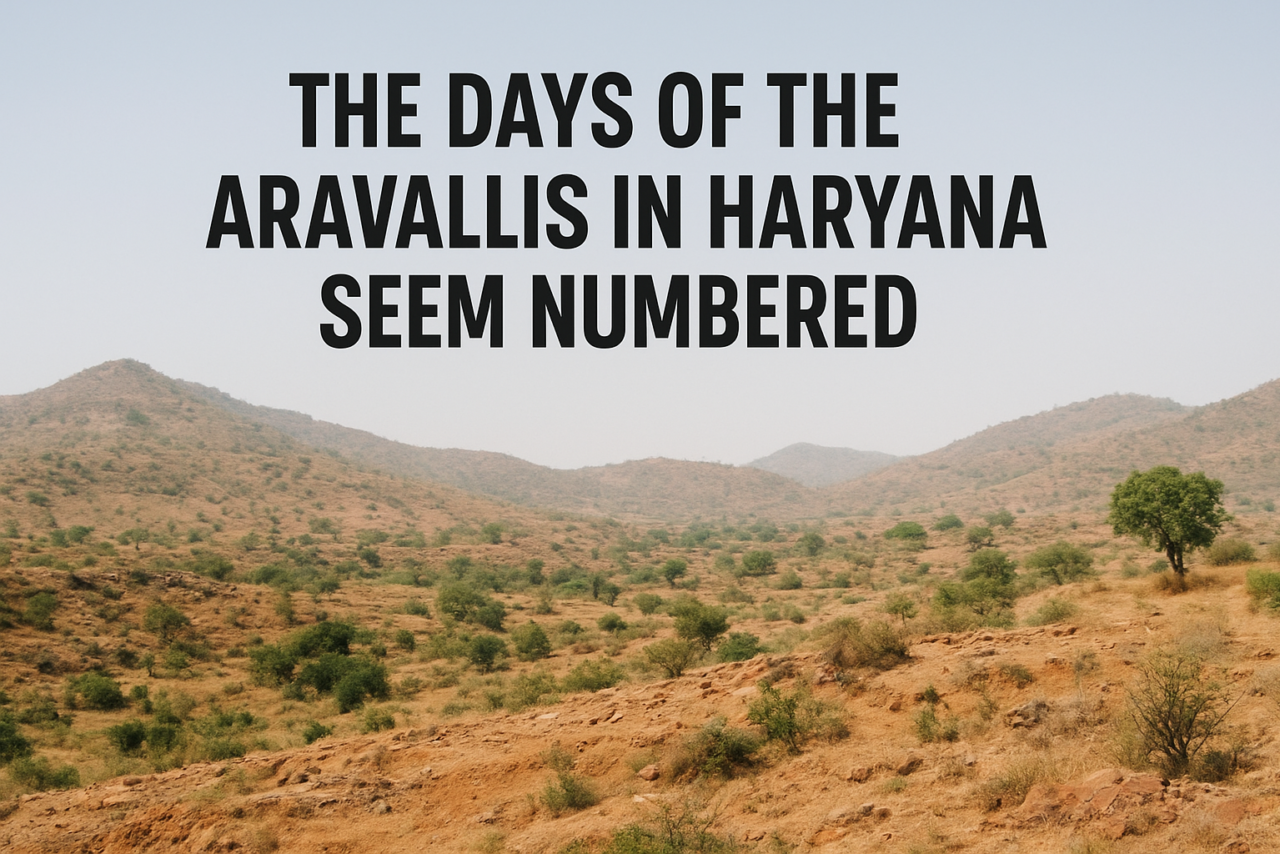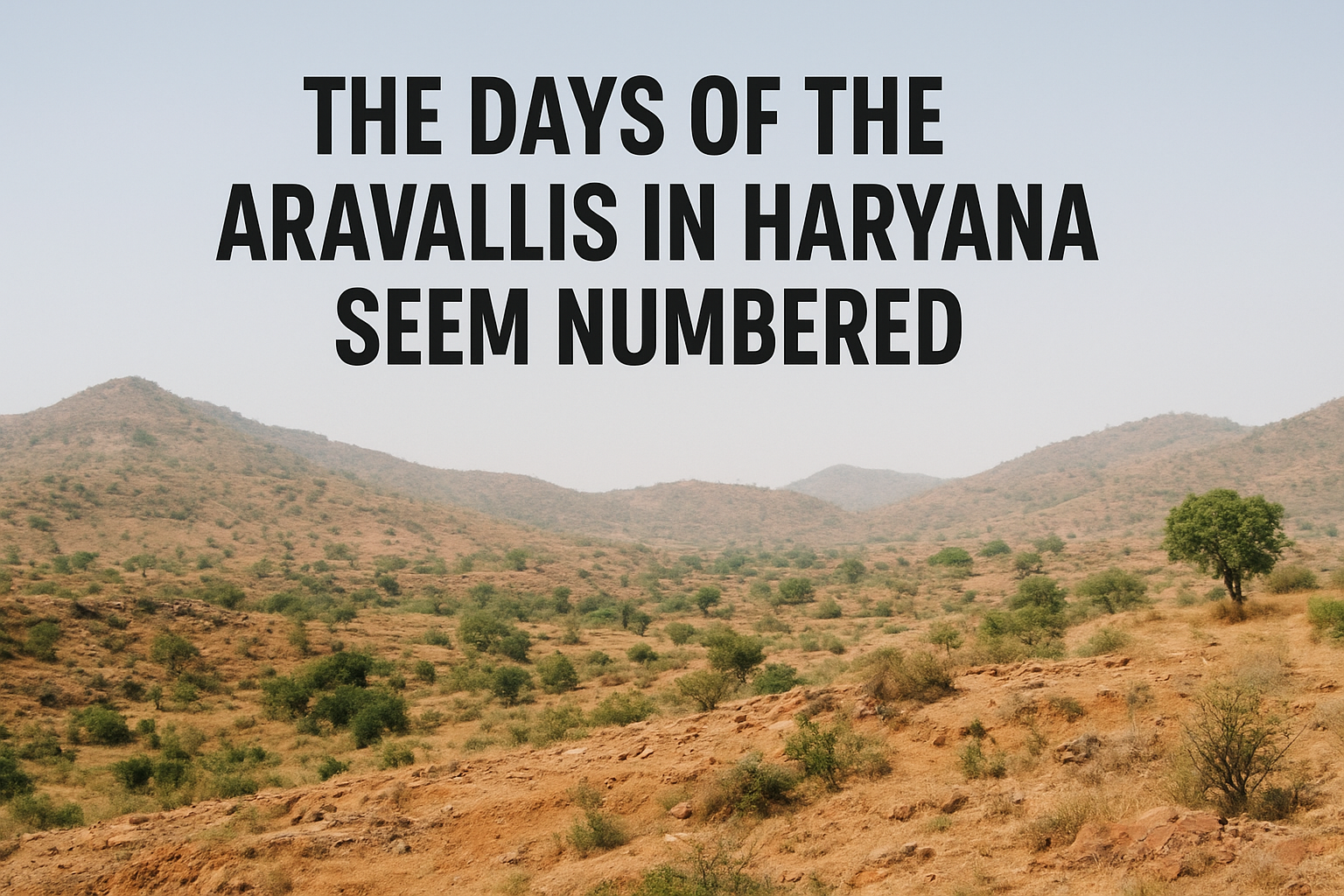
The Aravalli hills, one of the oldest mountain ranges in the world, have long served as the green lungs of northern India. Stretching across Haryana, Rajasthan, and Delhi, the Aravallis play a crucial role in maintaining ecological balance—recharging groundwater, preventing desertification, and controlling pollution. However, recent developments and policy shifts in Haryana have sparked concerns that the survival of this ancient ecosystem may soon be in jeopardy.

Policy Decisions Stir Environmental Concerns
Environmentalists and activists have raised alarm over the Haryana government’s proposed changes to land use policies that could open parts of the Aravalli range to construction and mining. Several reports suggest that the government is considering easing restrictions under the Punjab Land Preservation Act (PLPA)—a move that could legalize previously prohibited activities in ecologically sensitive areas. Critics argue that such actions would accelerate the destruction of forest cover and biodiversity that the Aravallis still sustain.
Encroachments and Illegal Mining on the Rise
Over the past decade, illegal mining and rampant encroachments have steadily eaten into the Aravalli landscape. Despite multiple Supreme Court orders banning mining in the region, satellite imagery and field reports indicate ongoing activity in several parts of Gurgaon, Faridabad, and Nuh districts. The extraction of stone and sand not only devastates the fragile terrain but also leads to soil erosion, loss of vegetation, and depletion of groundwater—critical resources for Haryana’s water-stressed areas.
Impact on Air Quality and Groundwater Levels
The degradation of the Aravallis has direct repercussions on Haryana’s air quality and water reserves. The forests act as a natural barrier to dust and pollutants from the Thar Desert and neighboring industrial zones. With shrinking green cover, pollution levels in cities like Gurugram and Faridabad have worsened significantly. Moreover, the hills contribute to the recharge of groundwater aquifers. As deforestation continues, the water table is dropping sharply, creating a crisis for both rural and urban populations.
Public Outcry and Legal Battles
Environmental activists and citizen groups have taken to the streets and the courts to save the Aravallis. Campaigns like “Save Aravalli” and petitions filed in the National Green Tribunal (NGT) emphasize the importance of conserving the range for future generations. Despite these efforts, experts say enforcement remains weak and often undermined by vested interests. The call for stronger legal protection and strict monitoring grows louder as urbanization pressures mount.
A Call for Sustainable Development
The future of the Aravallis depends on the balance between development and ecological preservation. While Haryana continues to expand industrial and residential infrastructure, experts argue that sustainable urban planning can coexist with conservation efforts. Strict adherence to environmental laws, reforestation programs, and public awareness initiatives are essential to safeguard this vital natural shield.
Conclusion
As Haryana’s skyline rises, the Aravallis stand as a reminder of what could be lost in the name of progress. Without urgent action and responsible governance, the state risks not only losing an irreplaceable natural treasure but also compromising its environmental future. The fate of the Aravallis, and the millions who depend on their ecosystem services, hangs in the balance.




Leave a Reply